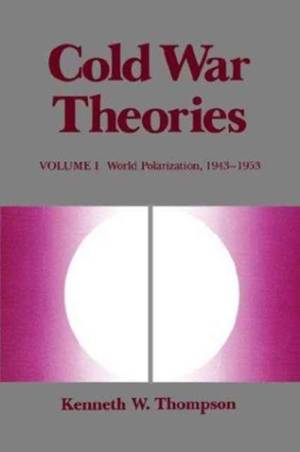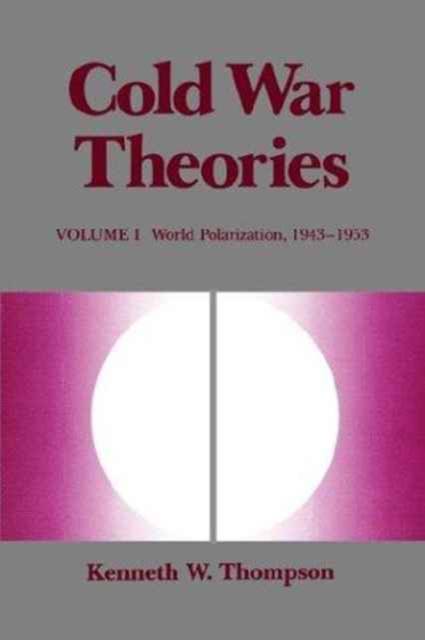
- Retrait gratuit dans votre magasin Club
- 7.000.000 titres dans notre catalogue
- Payer en toute sécurité
- Toujours un magasin près de chez vous
- Retrait gratuit dans votre magasin Club
- 7.000.0000 titres dans notre catalogue
- Payer en toute sécurité
- Toujours un magasin près de chez vous
Description
In this first of a two-volume examination of the Cold War, Kenneth Thompson offers a broad and, at the same time, specific account of its history and its historians. Thompson's aim is to find the best framework for understanding how the Cold War originated, what forces and factors produced it, how Soviet and American policies intensified the conflict, and what alternatives were open to the rivals. He evenhandedly sets forth three competing theories of the Cold War--the orthodox, revisionist, and critical/interpretative views--and reveals how the ideological confines of certain interpretations have made for incomplete understanding. Calling upon some of the great thinkers of our century, Thompson shows that orthodox and revisionist historians alike are misled by their exaggerated estimates of national capacity and interests.
Volume I follows the course of the Cold War from the end of World War II and America demobilization through the war in Korea. Tracing the influence of the theories on policy makers, Thompson finds missed opportunities and unintentional acts of belligerence during such tense times as the debates over Poland, Iran, the Truman Doctrine, the Marshall Plan, NATO, and the Berlin Blockade. By joining political history with the theoretical approaches, the author seeks to show that theory and history ought to be conjoined in a study of the Cold War without minimizing the value of each separate outlook. In its widest sense Cold War Theories is about the nature of history--that intricate tapestry that stretches past out limits to see. In discussing the early period in the Cold War, Thompson keeps his eye on possible parallels and differences with the present era marked by the conflicts in Iran and Afghanistan. Throughout his presentation, Thompson keeps in mind that we are entering a new era of intense conflict in the Cold War wherein we can ill afford any form of dogmatism: "Not only is reality more complex than ideology, but change is the first law of the political universe."Spécifications
Parties prenantes
- Auteur(s) :
- Editeur:
Contenu
- Nombre de pages :
- 262
- Langue:
- Anglais
Caractéristiques
- EAN:
- 9780807117446
- Date de parution :
- 01-09-91
- Format:
- Livre broché
- Format numérique:
- Trade paperback (VS)
- Dimensions :
- 152 mm x 229 mm
- Poids :
- 344 g

Les avis
Nous publions uniquement les avis qui respectent les conditions requises. Consultez nos conditions pour les avis.






